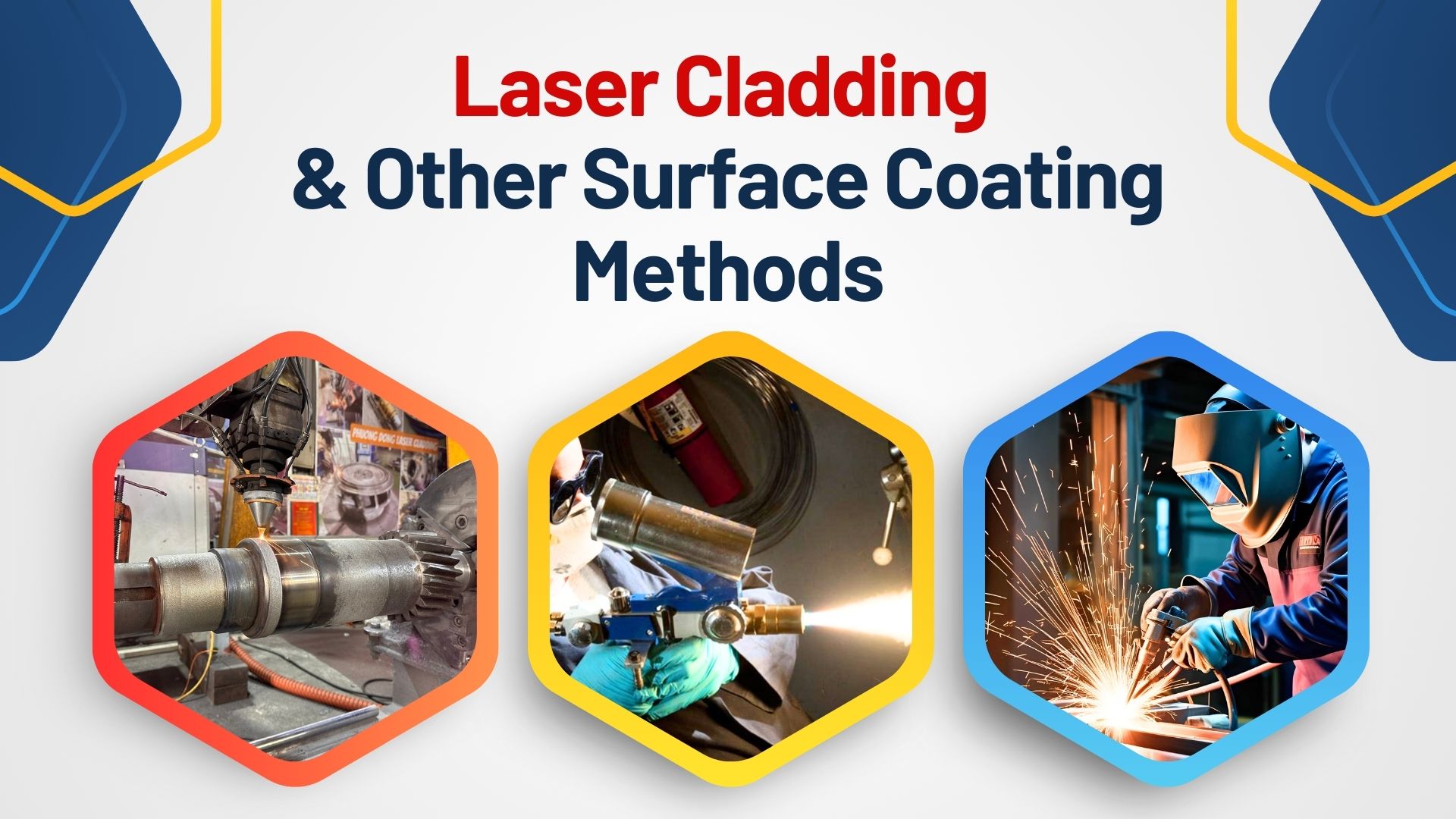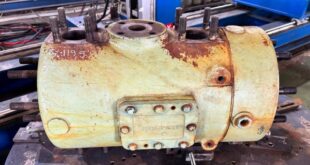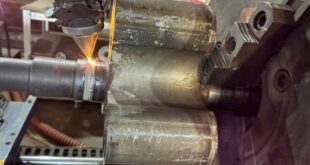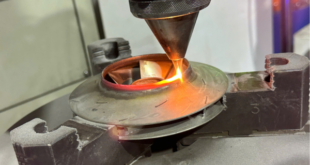Comparison Between Laser Cladding and Other Surface Coating Methods
Surface coating is an effective solution to enhance durability, restore, and extend the lifespan of machine components under harsh working conditions. Today, the most common methods include: Laser Cladding, Plasma Transferred Arc (PTA) welding, Thermal Spray Coating, High-Velocity Oxy-Fuel (HVOF), and traditional welding methods like MIG/MAG. So which technology is the most suitable for your business?

Laser Cladding – The Most Advanced and Precise Technology Today
Laser cladding uses a high-powered laser beam to melt the coating material (in powder or wire form), creating a metallurgical bond between the coating and the base material.
Key Advantages:
- High precision, automated with CNC or robots
- Uniform, strong coatings with no cracks
- Very small heat-affected zone – minimizes part distortion
- Ideal for wear- and impact-resistant parts: shafts, gears, cylinder linings…
Disadvantages:
- High equipment and operational cost
- Requires highly skilled technicians
Plasma Transferred Arc (PTA) Welding
PTA uses a plasma arc and alloy powder to create a durable surface coating.
Advantages:
- Good adhesion and thick coating
- High wear resistance
- Suitable for shafts, valves, and large components
Disadvantages:
- Larger heat-affected zone compared to laser
- May deform thin parts
HVOF
HVOF (High Velocity Oxy-Fuel) is a spraying method using high-speed combustion gas to shoot the coating material onto the surface.
Advantages:
- Extremely hard coating with excellent mechanical adhesion
- Suitable for corrosion- and wear-resistant parts (e.g., pistons, molds, shafts…)
Disadvantages:
- No metallurgical bond (only mechanical adhesion)
- Not suitable for parts under heavy impact loads
- Difficult to apply on complex shapes
Thermal Spray Coating
A traditional technique that sprays molten material onto the surface.
Advantages:
- Fast and can cover large areas
- Minimal effect on base material
Disadvantages:
- Coating may peel off
- Not suitable for dynamic loads and strong impacts
MIG/MAG Welding – Common Traditional Method
Manual arc welding and MIG/MAG methods are easy to implement but not suitable for high technical requirements.
Advantages:
- Low cost
- Widely available equipment
Disadvantages:
- Uneven coating
- Large heat zone, easy to deform the workpiece
- Low coating lifespan
Comparison Table
| Criteria | Laser Cladding | PTA Welding | HVOF | Thermal Spray | MIG/MAG Welding |
| Precision | ⭐⭐⭐⭐⭐ | ⭐⭐⭐⭐ | ⭐⭐⭐⭐ | ⭐⭐ | ⭐⭐ |
| Bonding Type | ⭐⭐⭐⭐⭐ (Metallurgical) | ⭐⭐⭐⭐ (Metallurgical) | ⭐⭐ (Mechanical) | ⭐ (Mechanical) | ⭐⭐ |
| Wear Resistance | ⭐⭐⭐⭐⭐ | ⭐⭐⭐⭐ | ⭐⭐⭐⭐⭐ | ⭐⭐ | ⭐⭐ |
| Impact Resistance | ⭐⭐⭐⭐⭐ | ⭐⭐⭐⭐ | ⭐⭐ | ⭐ | ⭐⭐ |
| Distortion Control | ⭐⭐⭐⭐⭐ | ⭐⭐⭐ | ⭐⭐⭐⭐ | ⭐⭐⭐⭐ | ⭐ |
| Initial Investment Cost | ⭐ | ⭐⭐ | ⭐⭐ | ⭐⭐ | ⭐⭐⭐⭐ |
Comparison Table of Surface Coating Methods

Conclusion
If you need to restore or enhance components that face extreme wear, heavy load, and require precision, laser cladding is the most optimal choice. Though the initial cost is high, the long-term efficiency is superior.
Meanwhile, HVOF is ideal for extremely hard coatings, but not suitable for impact-loaded parts. PTA welding is a good intermediate solution, while thermal spray and traditional welding are only recommended for basic applications without high durability requirements.
Consult with PHUONG DONG INDUSTRY
We specialize in laser cladding services, PTA welding, and surface heat treatment, serving industries like cement, steel, mining, oil & gas, and many other heavy industries.
Contact us for consultation and support:
PHUONG DONG TRADING & INDUSTRY CO., LTD
Address: Lane 70, Dan Di Street, Uy No Commune, Dong Anh District, Hanoi, Vietnam
Phone/Zalo: 0987.822.360 – Email: [email protected]
#LaserCladding #SurfaceTreatment #IndustrialWelding #HVOF #ComponentRepair #PhuongDongIndustry

 Laser Cladding Phương Đông
Laser Cladding Phương Đông


